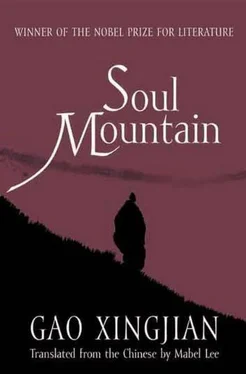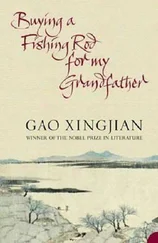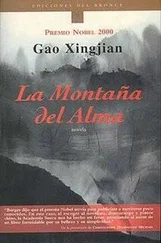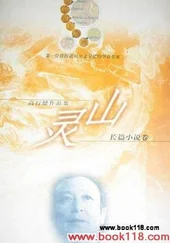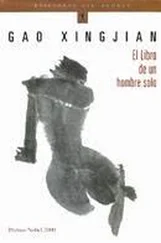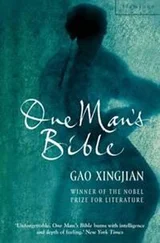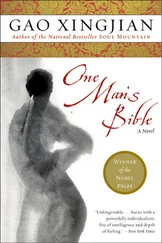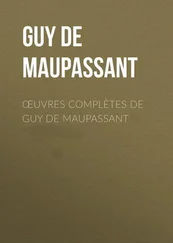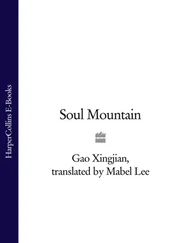— He achieved it, as in this snow-swept landscape.
— Can you verify that this painting is authentic?
— Surely that’s not important? If you think it is then it is.
— What if I think it isn’t?
— Then it isn’t.
— In other words, you and I think we have seen his work.
— Then it is his work.
Leaving Tiantai Mountain, I go on to Shaoxing where rice liquor is produced. This small city is not famous only for its rice liquor, it has also produced numerous famous personalities, including great politicians, writers, artists and heroic women whose old homes have now all been converted into museums. Even the local grain temple where Ah Q, the lowliest of the characters created by the pen of Lu Xun, sheltered from the storm one night, has been restored and painted in bright colours. There is a horizontal tablet with an inscription by a famous contemporary calligrapher. When Ah Q was beheaded as a local bandit he could not have imagined he would be so honoured after his death. I begin to reflect that it was difficult even for minor characters of this small town to escape being killed. So it goes without saying that the heroic revolutionary martyr Qiu Jin who believed it was her duty to save her race was doomed from the outset.
Her photo is hanging in her old residence. This talented daughter of a big family wrote beautiful poetry and prose and has elegant eyebrows, bright eyes and a gentle expression. She was just twenty when she was tied up, paraded through the streets to the market place and beheaded in broad daylight.
That literary giant of the age, Lu Xun, was a fugitive on the run all the time. Afterwards, he luckily moved into the foreign concession, otherwise he would have been killed long before he died of illness. It seems in this country nowhere was safe. There is a line in one of Lu Xun’s poems, “I spill my blood for the Yellow Emperor”, which I used to recite as a student, but which now I can’t help having doubts about. The Yellow Emperor was, according to legend, the first emperor of this land and can also mean one’s homeland, the race, or one’s ancestors. But why is it necessary to use blood to promote the spirit of one’s ancestors? Can one achieve greatness by spilling one’s hot blood? One’s head is one’s own, why does it have to be chopped off for the Yellow Emperor?
Xu Wei’s couplet, “The world is a false illusion created by others, what is original and authentic is what I propose”, seems to be more penetrating. However, if it is a false illusion why is it created by others? And whether or not it is false is irrelevant, but is it necessary to allow others to create it? Also, as for what is original and authentic, at issue is not its authenticity but whether or not it can be proposed.
His Green Vine Studio is tucked away deep in a little lane and consists of a smallish courtyard with several old vines and a hall with large spotlessly clean windows, said to be the original structure. These peaceful surroundings nevertheless sent him mad. Maybe the human world is not meant for human habitation, yet human beings continue to survive. In seeking to survive and yet to retain the authenticity existing at parturition one will either be killed or go mad, if not one will constantly be on the run.
I can’t stay long in this small town and flee.
Kuaiji Mountain beyond the city is the tomb of Yu the Great, historically, the first dynastic emperor with a documented genealogy. About the twenty-first century BC he unified the empire and at an assembly of all the commanders proclaimed their meritorious achievements and rewarded them.
I pass the stone bridge at Ruoye Stream, below pine-forest-covered hills. Paddy rice is drying on the square in front of the site of Yu the Great’s tomb, the late crop has already been harvested. It is still quite warm in the mid-autumn sun and I feel comfortably drowsy.
Within the gates is an enormous deserted courtyard. I can only try to imagine how it was that right here the Miao descendants of the Hemudu people who seven thousand years ago grew paddy rice, raised pigs, fired clay figures with human heads and faces, together with the descendants of the Liangzhu people who five thousand years ago inscribed geometric designs and circular symbols, and the ancestors of the Baiyue who had birds as totems, shaved their heads and tattooed their bodies, had all submitted to a review of the troops by Yu the Great. At the ceremony it happened that the hapless giant Fang Feng came late, wearing a hemp coat with a leather cord around his waist and looking generally slovenly. Yu the Great ordered his retainers to decapitate him.
Two thousand years ago, Sima Qian came here to carry out investigations and wrote that great work the Historical Records . He offended the emperor and, although he managed to keep his head, he was castrated.
On the roof of the main hall, between two dark green dragons, is a round mirror reflecting the dazzling sunlight. The new statue of Yu the Great inside the gloomy main hall has a kindly, almost commonplace look. However, the nine battle axes behind the statue, symbolizing his curbing of the floods in the nine kingdoms, succeed in indicating something closer to the truth.
According to the account in the “Records of the State of Shu”, Yu was born in Shiniu and was a native of Guangrou County in Wenshan. I have just come down from that area which is the present Qiang nationality district of Wenchuan as well as the home of the giant panda. Yu was born from the womb of a bear and this can be substantiated in an earlier work, the Classic of the Mountains and Seas .
His achievement of curbing the floods is generally thought to have been through his dredging of the Yellow River but I have reservations about that. My theory is that he set out from the upper reaches of the Min River (the main source of the Yangtze in ancient times was the Min River and references can be found in the Classic of the Mountains and Seas ), followed the course of the Yangtze and passed through the Three Gorges. In the north he fought in the mountains of the Jishan people, in the south against the kingdom of Gonggong, and in the east in the mountains of the Yunyu people. He waged war all the way to the shores of the East China Sea. In the kingdom of Qingqiu which at the time produced the nine-tail fox symbolizing good fortune in the verdant place of Tushan, later renamed Kuaiji, he encountered the seductive beauty Yaorao. When on their wedding day he revealed his original bear appearance, the young virgin was panic-stricken. The divine Yu the Great, wild with lust, chased after her and shouted: “Open up!” Hence the first prince was born into the world to inherit the position of emperor. For his wife Yu was a bear, amongst the ordinary folk he was a god, for the historian he was an emperor, for those who write fiction he can be described as the first person to kill another in order to realize his ambitions. As for the legend about the flood, it is possible to search for elements of prenatal memory in the amniotic fluids of the womb. In overseas countries there are people carrying out this type of research.
In Yu’s tomb there are now artefacts for reference but the experts still cannot decipher the tadpole-like script on the stone epitaph opposite the main hall. I look at it from various angles, ruminate for a long time, and suddenly it occurs to me that it can be read in this way: history is a riddle,
it can also be read as: history is lies
and it can also be read as: history is nonsense
and yet it can be read as: history is prediction
and then it can be read as: history is sour fruit
yet still it can be read as: history clangs like iron
and it can be read as: history is balls of wheat-flour dumplings
Читать дальше
Конец ознакомительного отрывка
Купить книгу
